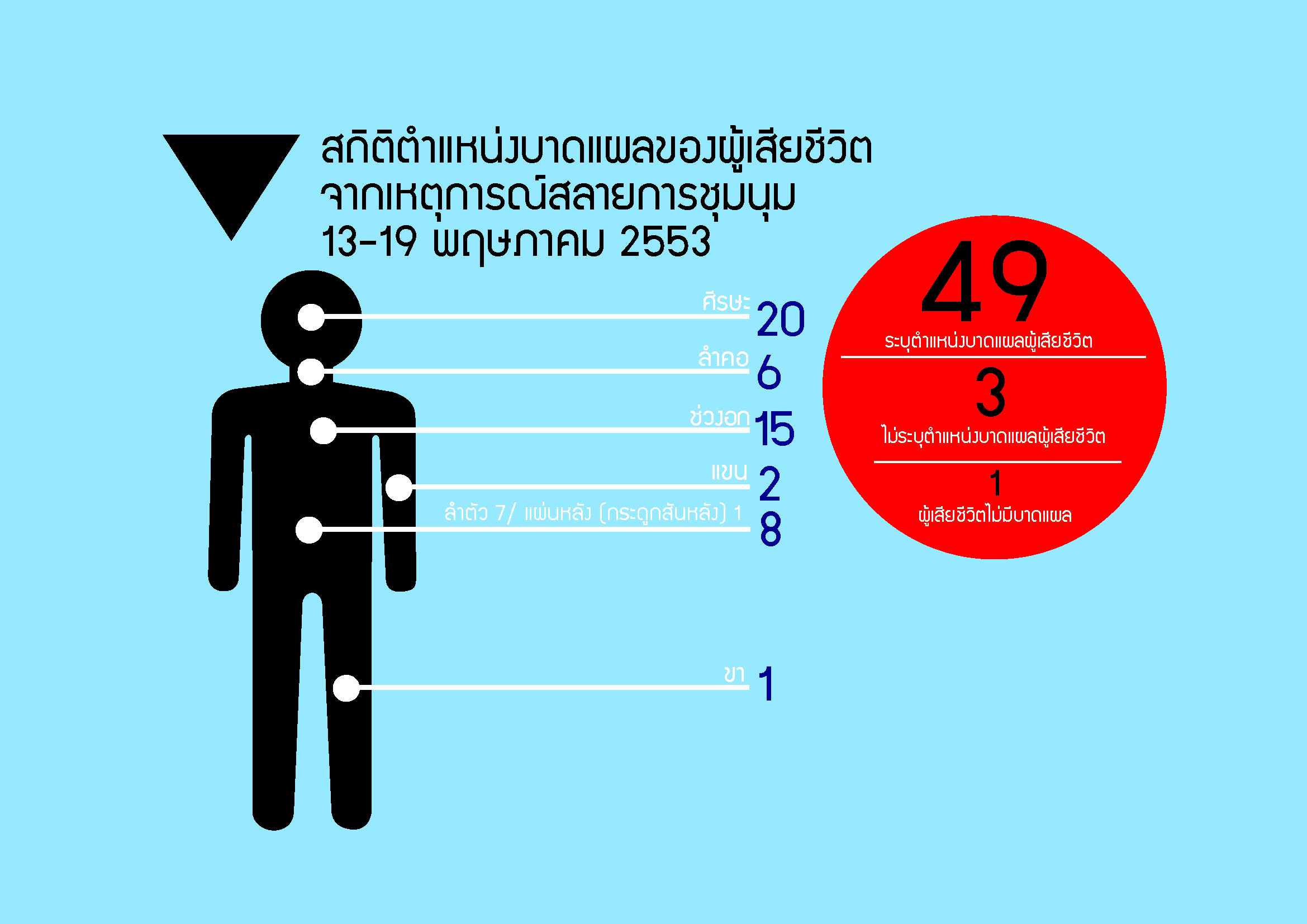Sometimes one image can capture what many thousands of words cannot.
Dr Bandit Chanrojanakit and his team, Marginalised Monsoon Group (р╕Бр╕ер╕╕р╣Ир╕бр╕бр╕гр╕кр╕╕р╕бр╕Кр╕▓р╕вр╕Вр╕нр╕Ъ), have published a preliminary fact finding report on the political violence between 13 and 20 May 2010. Their data are collected from various sources including seven daily newspapers. The 590-page report provides a chronology and details of the violent crackdown, including the names of those who were killed and injured. It has six main components:
- chronology of the crackdown from 13-20 May;
- chronology of the deaths and injuries;
- a map of locations where clashes took place;
- statistics on deaths and injuries;
- a diagram showing causes of death; and
- a compilation of official documents related to the setting up of Centre for Resolution of the Emergency Situation (CRES) and other orders.
The diagram of the locations of the wounds of those killed during this period, shows that 77% of the wounds are to the head, neck and chest. Overall, 78% of deaths in the period considered in the report were caused directly by gunshots (and a good number of the other fatalities seem to be the indirect result of gunshot injuries). The increase of violence is directly correlated to the prohibition of ambulances and rescue teams from entering into the area and the death of some rescue staff. This evidence is contrary to what one would have expected from CRES’s seven publically announced measures which ranged from negotiation to using rubber bullets. None of the measures involved live ammunition.
 Facebook
Facebook  Twitter
Twitter  Soundcloud
Soundcloud  Youtube
Youtube  Rss
Rss 